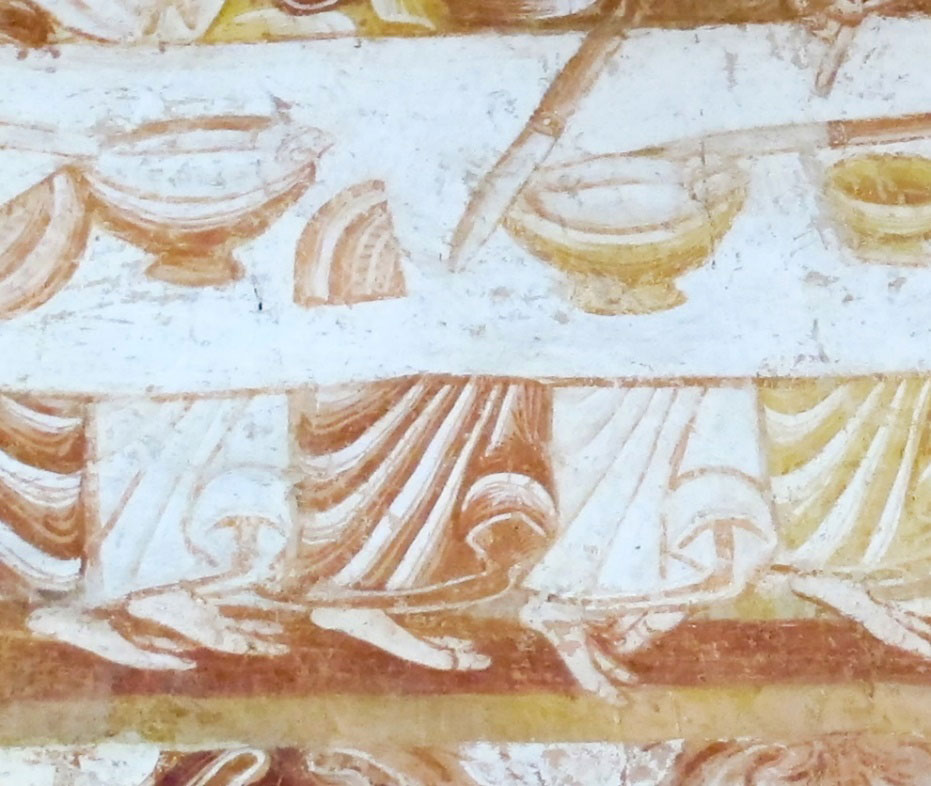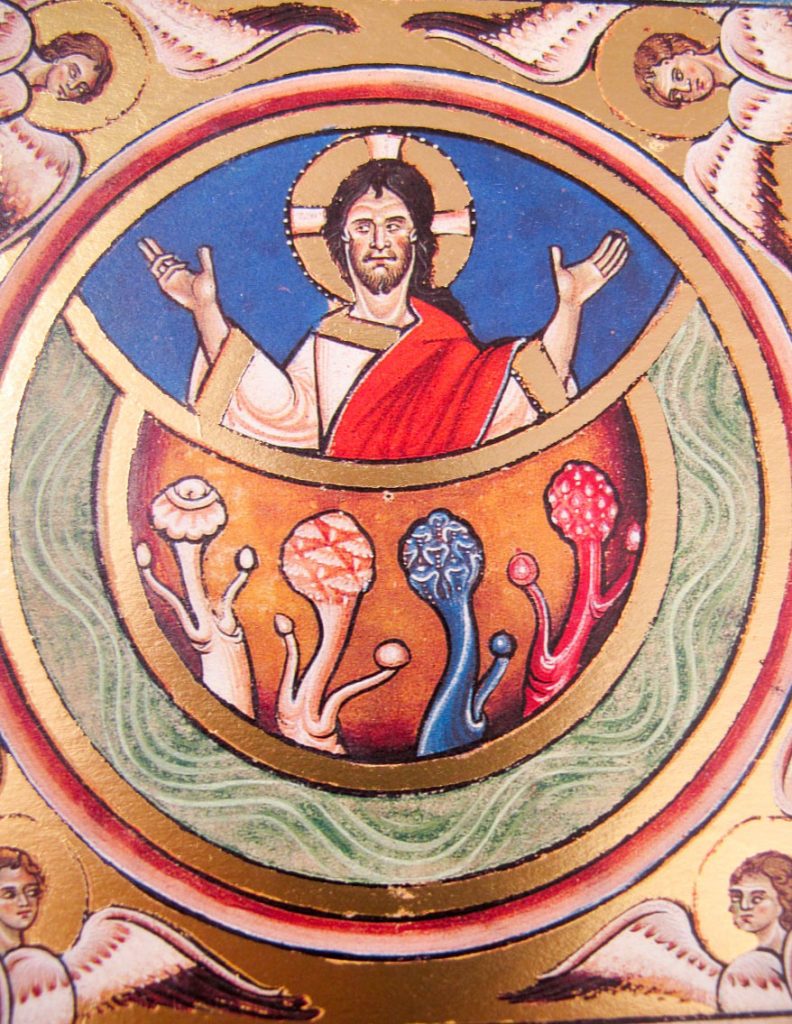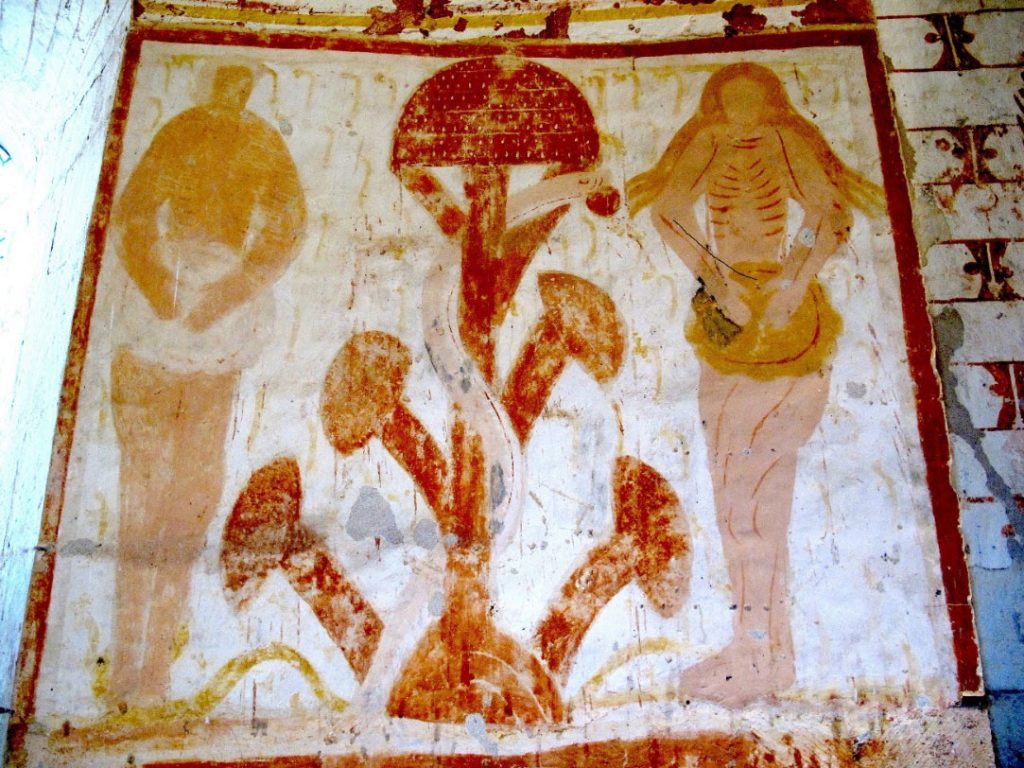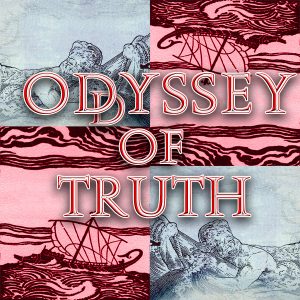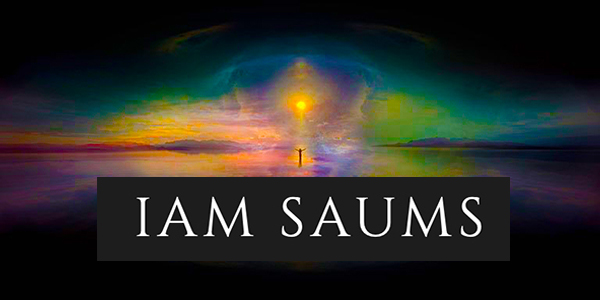The Psychedelic Gospels: The Secret History of Hallucinogens in Christianity
—-
It is our pleasure to welcome Julie and Jerry Brown, authors of The Psychedelic Gospels: The Secret History of Hallucinogens in Christianity, as our featured authors for November. Their book takes the reader on an anthropological journey throughout Europe and the Middle East. They provide compelling visual evidence that documents the role visionary plants have played in Christianity, challenging the reader to rethink what they think they know about the origins of Judeo-Christianity and the life of Jesus.
Interact with Jerry and Julie on our AoM Forum here.
There is an old saying: If you want to hide something, put it in plain sight. To our surprise, we learned that this saying is especially true for Christianity, where medieval works of art were created to illustrate the teachings of the Bible for the largely illiterate population. A close look at these religious artworks reveals the presence of psychedelic mushrooms–hidden in plain sight for centuries.
Based on stunning visual evidence of entheogens (plants that generate the divine within) found in cathedrals and churches throughout Europe and the Middle East, we propose the theory of the “Psychedelic Gospels.” By examining the Bible and the Gnostic Gospels through the lens of the Psychedelic Gospels, we reveal the role played by visionary plants in the origins of Christianity.
Astrophysicist Carl Sagan argues that “extraordinary claims require extraordinary evidence.” The remarkable photographs of entheogenic Amanita muscaria and Psilocybe mushroom images in Christian art, found in frescos, illuminated manuscripts, mosaics and stained-glass windows, provide this “extraordinary evidence.” Here are three examples from our book.
Entheogens in Christian Art
First, this fresco in the Church of Saint Martin de Vicq shows five large psilocybin mushroom caps spread out over the heads of the joyous youth greeting Christ as he enters Jerusalem (upper right-hand corner).
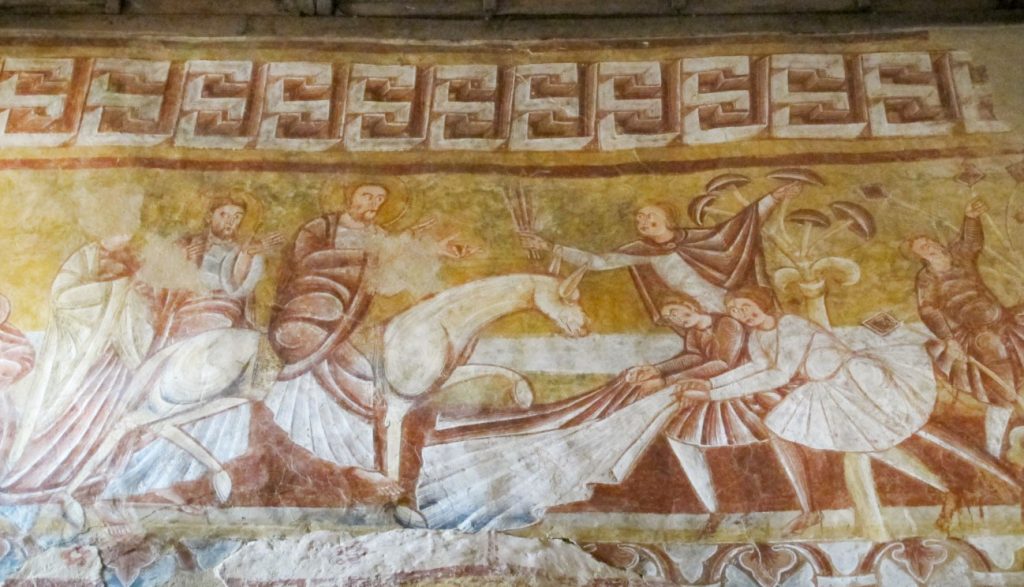 Photo: Julie M. Brown
Photo: Julie M. BrownChrist’s Entry into Jerusalem, Church of Saint Martin de Vicq, France
Fresco on south choir wall, early 12th century
Christ is moving towards the Towers of Jerusalem, depicted in an adjoining fresco which shows a youth using a long knife to cut through the stem of a giant psilocybin mushroom growing on top of the tower. A companion fresco depicts the famous Last Supper with a similar knife on the table along with what appear to be mushroom caps. Note that the artist has cleverly hidden a symmetrical row of mushrooms in the hems of the disciples!
Second, the twelve feet tall bronze Christ Column cast in 1015 by Bishop Bernard depicts the Transfiguration of Jesus, showing the disciples under a tri-fold psilocybin mushroom tree. This mushroom-tree is so realistically rendered in bas-relief that it has been identified as one of the most common European psilocybin mushrooms, Psilocybe semilanceata.
In the Transfiguration, the apostles Peter, James and John, go with Jesus to Mt. Tabor, where the Old Testament prophets Moses and Elias appear. There Jesus transforms before their eyes so that “his face did shine as the sun.” According to Matthew (17:5), “While he [Peter] yet spake, behold, a bright cloud overshadowed them: and behold a voice out of the cloud, which said, This is my beloved Son, in whom I am well pleased; hear ye him.”
 Photo: Julie M. Brown
Photo: Julie M. BrownScene 16, Transfiguration of Jesus, Christ Column, 1020
Saint Michael’s Church, Hildesheim, Germany
Bernward’s portrayal of the sacred mushroom-tree in the Transfiguration of Jesus is of particular significance. Unlike other miracles, which were performed by Jesus, this one happens to Jesus, reaffirming, as did the baptism by John, his divinely chosen role as the “Son of God.” The Transfiguration is the pivotal moment of the New Testament where humanity first intersects with God. As Bernward implies artistically, access to the divine is mediated through the sacred sacrament of psychoactive mushrooms.
It is worth noting that in most cases we do not know who placed these mushroom images in Christian art: the artist, the church fathers who commissioned the artist, or the church patrons who funded the frescoes? Or all three collaborating? However, in the case of the Christ Column, we know it was cast by the eminent Bishop Bernward, who was named a saint of the Catholic Church in 1193, some 150 years after his death.
God Creates Psychedelic Mushrooms
Third, the cover image of our book comes from the Great Canterbury Psalter, an illuminated prayer book that originated in the scriptorium of Canterbury Cathedral in England around 1180. The Psalter begins with eight stunning folios, each containing twelve lavishly colored, gold-embellished miniature paintings. These opening folios depict the history of the world according to Scripture, from Genesis to the life of Jesus. While the biblical narrative is traditional, offering psalms, songs and prayers, the illustrations are remarkable.
God Creates Plants, Great Canterbury Psalter, folio 1, England, 1180
Numerous red, blue, orange, and tan stylized mushrooms dot the first 100 pages, including this image showing God as the Creator of Plants; or, more specifically, as Creator of Sacred Plants. The red mushroom on the right with white speckles is Amanita muscaria. The next to appear is blue, attesting to Psilocybe mushrooms. While several authors have identified the following plant as a Syrian Rue (Peganum harmala) pod, careful inspection reveals that it bears no resemblance. Rather the color, shape, and fringes of the eight tiny mushroom images embedded in the cap suggest Panaeolus, a psilocybin-containing mushroom found in England and northern Europe. While others have described the plant on the far left as “an Opium Poppy in the shape of a mushroom,” again, there is little resemblance either to the flower or the pod of the opium plant. Instead, this appears to be another mushroom of the genus Psilocybe.
The presence of psychedelic mushroom images in the high holy places of England (Canterbury Cathedral), France (Chartres Cathedral) and Germany (St. Michael’s Church) suggest that the use of entheogens was widespread among the Catholic religious elite during the Middle Ages. This dispels the claim, made by author Brian Muraresku in The Immortality Key, that psychedelics had been systematically suppressed by religious authorities from the fourth century on, stamped out “beneath the jackboots of the Roman Catholic Church.” This argument is presented in Jerry B. Brown’s Review of The Immortality Key, found here.
Wasson-Allegro Controversy
The controversy between ethnomycologist R. Gordon Wasson (1898–1986) and philologist John Marco Allegro (1923–1988) over psychoactive mushrooms in Christianity in general, and over the identification of an A. muscaria mushroom (commonly known as “fly agaric”) in the 12th century Chapel of Plaincourault in Central France in specific, has cast a long shadow over the study of entheogens in Christian art – a shadow that has, as anthropologist Michael Winkelman points out, shaped “the academic response to Allegro’s book and the opinions of subsequent generations of scholars.”
The significance of the identification of the mushroom tree in Plaincourault as a psychoactive mushroom is a landmark in psychedelic studies of religion because it was the catalyst for the seminal debate between Wasson and Allegro about the role of entheogens in Christianity. If Wasson were right, then entheogens, especially sacred mushrooms, were only found at the early stages of Judeo-Christianity ending around the time of Genesis, well before 1000 BCE. However, if Allegro were right, then entheogens were integral to the origins of Judeo-Christianity with their usage persisting at least into medieval times, as evidenced by the Plaincourault fresco painted after 1000 CE. This positive identification of entheogens in Christian art would open the door to a line of inquiry that could ultimately require a reconsideration of the history of Christianity.
Many knowledgeable observers have interpreted this image as a mushroom or mushroom tree. Writing around 1900, Abbot Rignoux describes this fresco as a “mushroom-tree with several heads.” Soon afterwards, a photograph of this fresco was shown at a meeting of the Société Mycologique de France on October 6, 1910. The gentleman who presented the fresco made what was then the sensational observation that “instead of the customary Tree, the artist had given us the fly-agaric.” More recently, the official guidebook of “Mérigny-Indre, Chapelle de Plaincourault” makes note of the “tree of original sin depicted as an enormous mushroom.”
American ethnobotanist Richard Evans Schultes and Swiss pharmacologist Albert Hofmann comment that “The Tree of Knowledge, entwined by a serpent, bears an uncanny resemblance to the Amanita muscaria mushroom.” The Italian ethnobotanist Giorgio Samorini analyzed multiple representations of mushroom trees. He identifies Plaincourault as a prototypical A. muscaria mushroom-tree and contends that “Wasson’s conclusion may be considered premature.”
In a chapter titled “The Pope’s Banker,” we resolve Wasson’s greatest paradox: why did this indefatigable sacred mushroom seeker refuse to pursue his theory of the entheogenic origins of religion past the portals of the Church?
Our Differences with Allegro
While we applaud Allegro for being one of the first researchers to call attention to the seminal role of entheogens in religion, our theory differs from Allegro’s in three fundamental ways. First, while Allegro denies the existence of Jesus, we agree with religious scholars who believe that Jesus was an historical figure. Second, while Allegro bases his theory on the speculative interpretation of ancient languages, we base our theory on the plausible identification of entheogenic images. Third, while Allegro hopes that his writings will liberate people from the thrall of a false Christian orthodoxy, we hope that our discoveries will educate people about the history of psychoactive sacraments in Christianity.
“It’s The Da Vinci Code”
Calling our book “a mind-altering travelogue,” author Don Lattin describes it as “The Da Vinci Code meets The Electric Kool-Aid Acid Test.” The Psychedelic Gospels takes you along, step-by-step, on our decade-long anthropological adventure. It traces the tracks of sacred mushrooms across diverse ancient traditions, including the hymns of the Rigveda in India, the Eleusinian Mysteries of Ancient Greece, the healing cults of the Mazatec in Mexico, and the reindeer herders of the boreal forests of Siberia. Our quest begins with a surprising discovery of a psychoactive Amanita muscaria mushroom in Rosslyn Chapel in Scotland, and unfolds from the cathedrals at Canterbury and Chartres, to churches and chapels in France and Germany, to the magnificent museums of the Vatican in Italy, to remote cave churches of Turkey, and ultimately to the secluded pyramid chambers of pharaonic Egypt.
While our findings are startling, it is not our intention to question the fundamental beliefs of Christianity, but to uncover a mystery that we believe applies to many religions. Our findings do not deny the importance of religious sacraments but suggest that they should encompass all of God’s creations, including psychoactive plants. As Catholic Brother David Steindl-Rast perceptively asks, “If we can encounter God through a sunrise seen from a mountain top, why not through a mushroom prayerfully ingested?”
The presence of psychoactive plants in Judeo-Christianity, in ancient shamanism, and in the classical cultures of Greece and India raises intriguing questions about their broader role in the development of consciousness and culture. Did visionary plants play a seminal co-evolutionary role in the expansion of the human mind, as proposed in Terence McKenna’s Stoned-Ape Theory of human evolution? Is the “War on Drugs” the continuation of an age-old crusade by political and religious elites to control the public? Is the current resurgence of scientific research on the medical and therapeutic benefits of entheogens a tipping point that will lead to the end of this destructive war and possibly to a quantum leap in global consciousness?
Since biblical times, the sacred use of psychedelics has posed daunting challenges to religious and political communities. Challenges so great that with the coming of monotheism entheogens were suppressed as the forbidden fruit in the Garden of Eden in Genesis; demonized as the tools of satanic witches during the Inquisition; and banned as dangerous drugs in the 1970s. With the resurgence of interest in psychedelics, these challenges will surely resurface, as issues of medicine, religious freedom, and public policy.
Hopefully, this time around, we will address these concerns with an open heart and an open mind.
For additional information, see: “Entheogens in Christian Art: Wasson Allegro and the Psychedelic Gospels” and “Book Review of The Immortality Key,” in the Journal of Psychedelic Studies; and a 30-minute video presentation on The Psychedelic Gospels, Breaking Convention 2019, London. For our website, see: www.psychedelicgospels.com.
©2003-2021 Graham Hancock
– Come Like Us on Facebook – Check us out on Instagram –
– Sign Up for our Newsletter –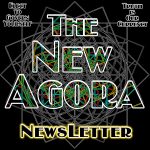
Subscribe to our New NOW Youtube Channel


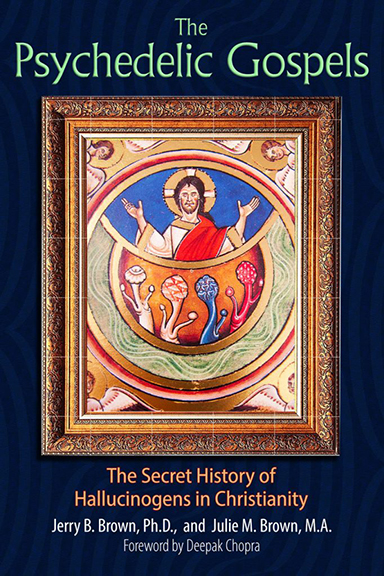
 grahamhancock.com
grahamhancock.com
